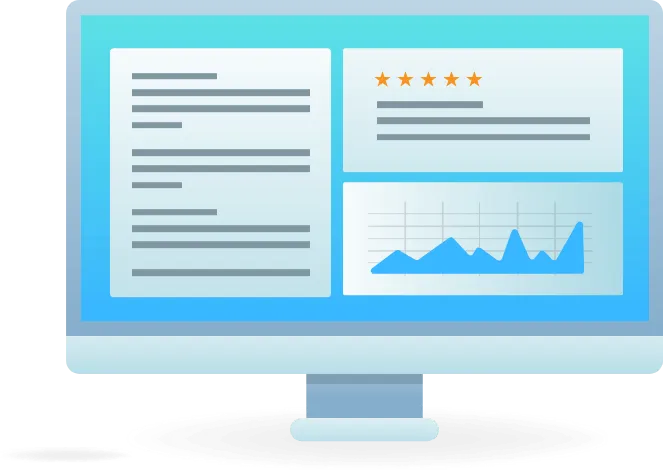
True Skip Blogs
The most Affordable & Comprehensive Data in the Industry.
.05 Cent Skip Tracing!!


How Can I Assess The Credibility Of Skip Tracing Data?
Introduction
Skip tracing, an investigative technique that involves locating a person's whereabouts, is an essential tool in various industries, from debt collection to private investigation, law enforcement, and beyond. The term originates from the phrase "to skip town," often used to describe individuals who have moved and left minimal clues behind.

In the digital era, skip tracers rely heavily on data to track individuals, and the credibility of this data is paramount to their success. Here is a comprehensive guide on how to assess the credibility of skip tracing data to ensure the accuracy and efficiency of your investigations.
Understanding Skip Tracing Data Sources
Understanding the intricacies of skip tracing data sources is fundamental to the practice of locating individuals who have seemingly vanished without a trace. This endeavor is predicated upon the judicious analysis of diverse data points that are culled from a myriad of repositories.
Predominantly, this information is sourced from public records, which can range from municipal court dockets to federal government archives, encompassing documents such as real estate transactions, birth and death certificates, and vehicle registrations. These records are invaluable in providing legally accessible insights into an individual's past and potentially current location.
Another critical wellspring of data for skip tracers is credit reports. These are generated by credit bureaus, which meticulously compile an individual's credit history, often revealing a tapestry of residential addresses, employment history, and financial associations that can provide pivotal leads. Moreover, applications for utilities—electricity, water, gas, or internet services—are fertile ground for skip tracing, as they typically necessitate the submission of accurate personal details for service initiation and billing purposes.
Therefore, understanding the depth and breadth of skip tracing data sources is a critical first step in the art of skip tracing. A comprehensive approach to data gathering involves not only the identification of these varied sources but also an appreciation for the context in which the data exists, the methods by which it has been collected, and the legal frameworks that govern its use.
Only by piecing together this complex puzzle with meticulous care can the credibility of the information be truly assessed and the likelihood of successfully locating individuals be enhanced. The first step in assessing credibility is understanding where the data originates:
Public Records: These include records from local, state, or federal governments, such as court files, marriage records, property ownership, and motor vehicle departments.
Credit Reports: Credit bureaus collect information related to an individual's credit history, which can provide leads on addresses and associated entities.
Utility Companies: Applications for services often require detailed personal information that can indicate a person's current location.
Social Media and Online Footprints: Digital trails on platforms like Facebook, Twitter, LinkedIn, and Instagram can offer real-time data.
Evaluating the Reliability of the Data
Upon the identification of data sources for skip tracing, it is crucial to transition to a meticulous evaluation of the information's reliability. This critical phase demands a focus on several pivotal factors that collectively determine the veracity of the data at hand.
Firstly, timeliness stands as a cornerstone in the credibility assessment process. Data's shelf-life is inherently perishable; hence, the most recently updated information typically holds the highest reliability. This aspect requires a careful examination of the timestamps associated with the data, as staleness could lead to errant conclusions.
Secondly, consistency emerges as a vital aspect of evaluation. When the same piece of information is corroborated across various independent sources, its credibility naturally increases.
Such cross-referencing acts as a reinforcing agent, providing a sturdy foundation for the data's dependability. Once the data sources are identified, the next step is to evaluate the reliability of the information. Here are some key factors to consider:
Timeliness: Data can become outdated quickly. It's essential to check the date when the information was recorded or updated. Recent data is more likely to be reliable.
Consistency: Cross-reference information from various sources. Consistent information across multiple sources is more credible.
Detail Level: Detailed data can give a more comprehensive picture and thus may be more reliable. For instance, a full address with a timestamp is better than just a city name.
Source Reputation: Evaluate the reputation of the source providing the data. Established databases and institutions typically have more rigorous data verification processes.
Techniques for Verifying Data Accuracy
Verification stands as the pivotal element in establishing the credibility of skip tracing endeavors. To ensure the accuracy of skip tracing data, a meticulous approach to verification must be implemented. Initially, one should engage in primary source verification, which involves directly corroborating the information with the originating entity. For instance, if an address is obtained, physically verifying the location or consulting official postal records could affirm its accuracy.
Additionally, secondary confirmation should be pursued, where independent data points are cross-checked for consistency. This may include verifying an individual’s employment status by reaching out to the purported workplace or checking a company’s official records.
The utilization of multiple databases for cross-referencing serves as another integral layer of verification. By analyzing the data against various databases, discrepancies can be identified, which may necessitate further investigation. Furthermore, engaging with seasoned professionals in the skip tracing field can provide invaluable insights, especially when inconsistencies arise.
Their experiential knowledge can guide the evaluation process and help determine the most reliable data strands. Implement these techniques to ensure the data's accuracy:
Primary Source Verification: Whenever possible, go directly to the source of the information. For instance, if you have an address, a visit to the location can confirm its accuracy.
Secondary Confirmation: Use additional sources to confirm the data. For example, if a social media profile suggests a place of employment, check the company’s website or contact the HR department.
Database Cross-Referencing: Use multiple databases to compare the information. Discrepancies can signal that further investigation is needed.
Expert Consultation: When in doubt, consult with other professionals in the field. Their experience can provide insight into the reliability of certain data types.
Legal and Ethical Considerations
Skip tracing, an investigative practice integral to locating individuals for legal, financial, or personal reasons, necessitates strict adherence to legal and ethical guidelines to uphold the rights and privacy of the subjects being traced. The legal landscape governing skip tracing is defined by several federal statutes, such as the Fair Credit Reporting Act (FCRA) and the Gramm-Leach-Bliley Act (GLBA), which stipulate the permissible use of personal data.
These regulations are designed to prevent misuse of information, particularly data sourced from credit reports and personal financial information, ensuring that skip tracing activities do not infringe on an individual's right to privacy and protection from harassment.
Furthermore, ethical considerations must be at the forefront of skip tracing operations. Privacy concerns are paramount; it is imperative to utilize only legally and ethically obtained data to avoid the moral pitfall of violating individual privacy. This means refraining from deceptive practices to acquire information, recognizing the sensitivity of the data handled, and respecting the intent behind privacy laws. Here are some legal and ethical considerations to keep in mind:
Compliance with the Law: Ensure adherence to regulations like the Fair Credit Reporting Act (FCRA) and the Gramm-Leach-Bliley Act (GLBA), which dictate how certain information can be used.
Privacy Concerns: Be mindful of privacy laws that protect individuals’ information. Only use data obtained legally and ethically.
Accuracy Responsibility: There is an ethical responsibility to ensure that the data being used is as accurate as possible to avoid harm or unnecessary invasion of privacy.
The Role of Technology in Data Credibility
Technology plays a crucial role in assessing the credibility of skip tracing data. Here’s how:
Data Aggregation Tools: Use advanced software to aggregate data from various sources, providing a broader view and helping to identify the most credible information.
Artificial Intelligence: AI can help assess the credibility of data by quickly analyzing patterns and inconsistencies that may suggest inaccuracies.
Blockchain Verification: Some databases are starting to utilize blockchain technology to ensure the integrity of the data by providing a transparent and unalterable record.
Best Practices for Maintaining Data Integrity
Adhering to best practices is essential in maintaining the integrity of skip tracing data. Some best practices include:
Regular Updates: Data should be regularly updated and verified to maintain its credibility.
Secure Storage: Implement robust data security measures to prevent unauthorized access and alterations.
Training: Ensure that all individuals involved in skip tracing are trained in data assessment techniques.
Conclusion
Assessing the credibility of skip tracing data is a complex process that requires a critical eye, a systematic approach, and adherence to legal and ethical standards. By understanding the sources, evaluating the reliability of the data, employing verification techniques, and utilizing technology, skip tracers can improve the accuracy of their findings and the efficiency of their investigations. Always remember that maintaining data integrity is not just a one-time activity but a continuous commitment to excellence and ethical practice in the field of skip tracing.
FAQ's
What is your data like?
At TrueSkip.io, we provide premium quality data. Our commitment to excellence ensures that our skip tracing information is accurate, reliable, and up-to-date. We prioritize data integrity to deliver the highest level of quality to our customers.
How long does is take to get data back?
We understand the importance of timely information. Our typical turnaround time is 24 business hours or less. We strive to process and deliver your requested data as quickly as possible, enabling you to move forward with your projects promptly and efficiently.
How much does it cost?
We offer tiered pricing based on the amount of data you need. Our pricing structure is designed to be flexible and affordable, accommodating projects of all sizes. You only pay for the records you require, ensuring cost-effectiveness without sacrificing quality.
What about a list with missing phone numbers?
At TrueSkip.io, we charge per record rather than per hit. While we strive to provide as much data as possible, it's important to note that the availability of phone numbers can vary depending on the sources and information provided. Our pricing model ensures fair and transparent billing based on the records you submit for processing.
Don't settle for subpar data or overpriced solutions. TrueSkip.io is here to revolutionize the way you approach skip tracing. Experience the power of high-quality data that doesn't drain your resources. Join the ranks of countless satisfied customers who have embraced TrueSkip.io as their go-to provider for accurate, reliable, and cost-effective skip tracing data.

Navigation
About us
Get In Touch
© Copyright 2024. Trueskip.io. All rights reserved.
